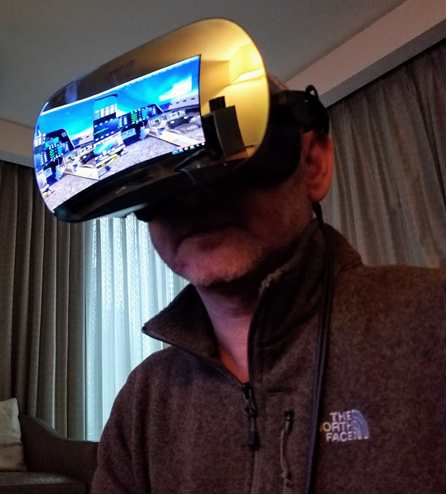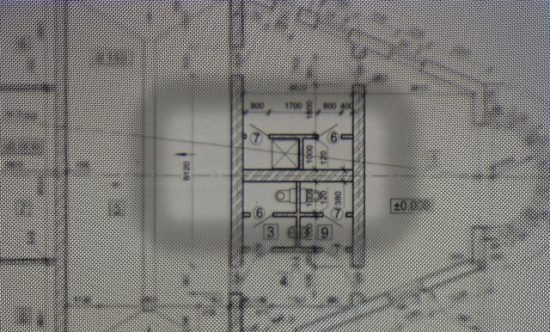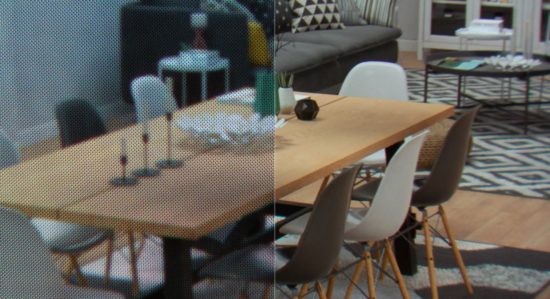Varjo’s enterprise VR contextual screen uses chipset made by Hitachi and Analogix
When I first encountered Varjo’s human eye resolution VR HMD in 2017, it was impressive but rough around the edges. The company, based in Helsinki, has since grown from 12 to 112 people and has raised $51 million. Their headset is targeted to design and simulation customers.

Varjo has taken the blank outside face plate and put a reflective surface on it. (Source: JPR)
The Varjo HMD is manufactured by US-based electronics manufacturing service provider, Flex Ltd. The system uses four displays made by Sony and AXO—two for a contextual wide view and two for the “focus screen.” The Varjo’s VR-1 headset’s fixed-foveated display uses two different displays per eye: an ultra-high pixel density display covering the central ~20 degrees of the field of view (where your eye naturally sees the sharpest) and a lower pixel density display which fills out the headset’s peripheral view. The focus screen has 63 pixels per degree of resolution which is what is considered “human eye resolution.”
The chipset for the focus screen is made by Hitachi and Analogix was chosen for the contextual screens. The focus display resides in the center of the field of view and blends into the larger “context display” which, with a resolution of 1,440 × 1,600, covers the peripheral field of view with a pixel density that’s similar to contemporary headsets like the Vive Pro. The VR-1 also includes custom-made eye-tracking.

An exaggerated approximation of how the ultra-sharp focus display fades into the less sharp context display. (Photo by Road to VR, based on images courtesy Varjo)
The headset isn’t priced for consumers. It costs $5,995 with an annual service fee of $995, and Varjo stresses that it’s only available for businesses and academic institutions. The company is already working with Airbus, Audi, Saab, Volkswagen, and Volvo, among others.
Saab is pleased with how VR-1 lets pilots read the tiny text on switches in the cockpit, see aircraft far off on the horizon, and everything in between.
Siemens says the VR-1 is the first device to provide the kind of visual fidelity engineering professionals need to work in VR.
The device requires a minimum GTX 1070 and makes use of a long (32-foot) fiber optic cable per the request of car and military clients (including Audi and Saab), so customers can walk around vehicles in virtual space. The weight of the headset, including the new hard strap, is 905 grams. The device is $5,995 and the software license costs another $1,000 per year. The company is promising support for 3D software tools and engines, including Unreal Engine, Unity, Autodesk VRED, Prepar3D, ZeroLight, and VBS Blue IG. An SDK is also available for integration into custom 3D engines.
What do we think?
We think that super-resolution is important for designers who need to see ultra-fine details such as textures of various materials that have complex surfaces and also for simulations where spotting very small details is mission critical. Varjo plans to launch an AR pass-through add-on for the VR-1 later this year.

An exaggerated approximation of how the ultra-sharp focus display fades into the less sharp context display. (Photo by Road to VR, based on images courtesy Varjo)
